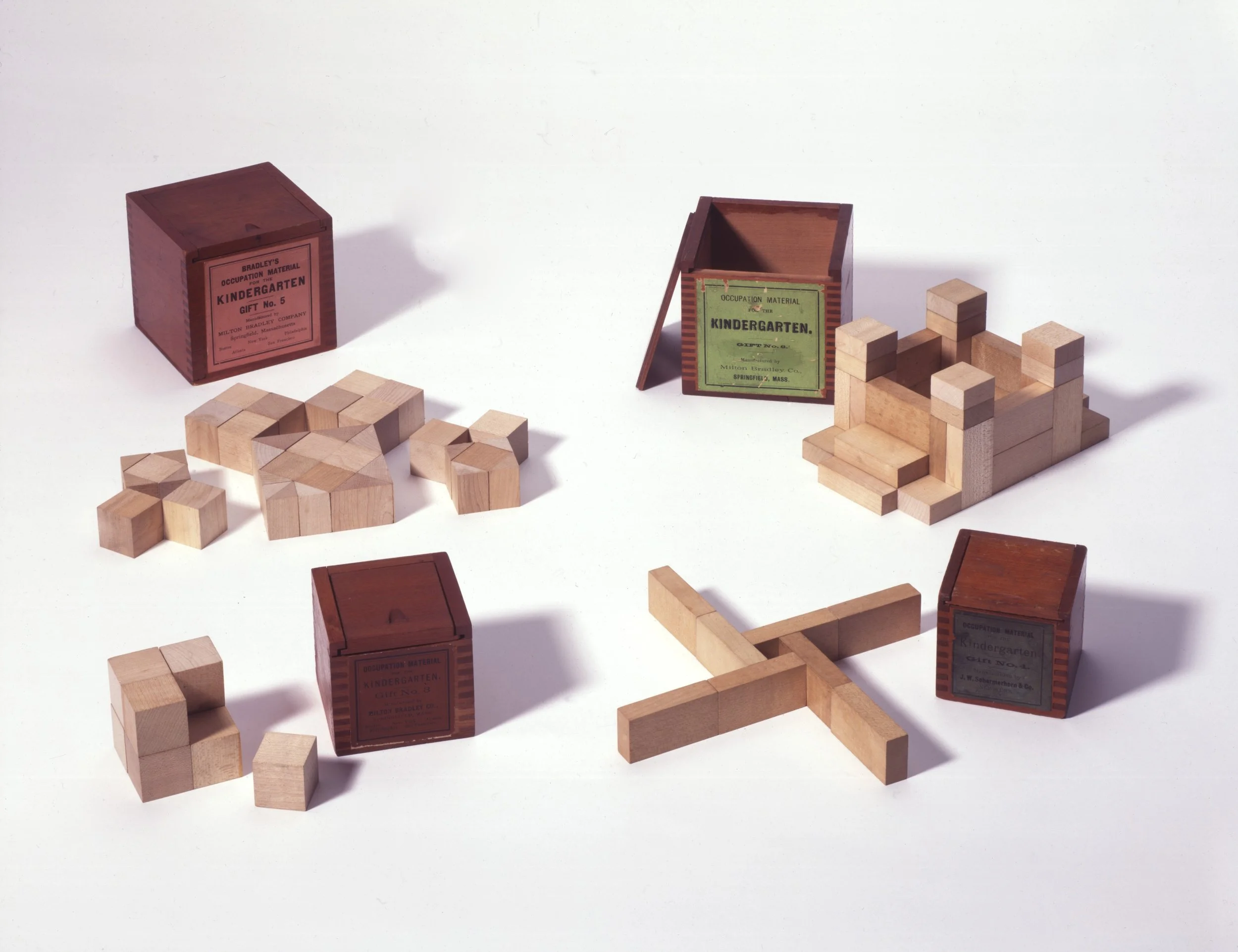Wooden Blocks: A Brilliant Foundation
These blocks are part of the set of “Froebel Gifts,” created by the 19th century originator of Kindergarten.
The most shocking conversation I ever had with an educator was a discussion several years ago with a preschool teacher. She said that some of the kids in her class could stack blocks on an iPad, but not real blocks in real life. Yikes! Cyberspace looms large in modern society, for sure, but we still live in the real life 3-D world of physical, tactile space, and we all need to know how to navigate it. Interacting with our immediate environment has been how humans have learned since the beginning of time; the physical world is still our primary teacher and one we cease to attend to at our peril.
Today’s students have fewer intuitions about the physical world around them, as I first discovered when coaching two nursing students in my Sustainable Development class. They had built a model house meant to illustrate geothermal technology for residential climate control. Being nursing students, they had ready access to tongue depressors, and they fashioned a fan with crossed tongue depressors suspended from a pipe cleaner. When I suggested they make a more realistic fan that could actually move air, they were puzzled. What was wrong with their fan? I pointed out that the blades were flat, not tilted to move air more effectively. “But real fans don’t have tilted blades,” one said. It made me realize that I couldn’t assume my students knew some everyday things about the world around them that seemed obvious to me.
I am not a digital native, and as a result I sometimes struggle with things my students can do quickly and intuitively. But because of my intense childhood engagement with blocks and other toys and building materials, I have pretty good physical intuitions. I think of myself as a maker, and in my spare time have enjoyed working with wood, clay, textiles, yarn and other craft materials. Blocks laid the groundwork for me and are, as Frank Lloyd Wright said, “in my fingers to this day.”
I wrote an essay about my formative childhood experience with blocks and how they have shaped my adult life, both professional and personal. In many ways, they are the foundation of my work on Thinking with Things.

